Question from Jessica, Drawing Academy student
I really like the Drawing Academy course; what a great resource for information!
In the video lessons, you often talk about constructive drawing principles. Can you please clarify what they are and how to use them?
I also have challenges with seeing proportions and measuring with a pencil. Can you please explain in more detail how to do that?
Constructive Drawing Principles
Using constructive drawing principles is the way of drawing what you know instead of copying what you see.
The difference between these two approaches is explained here:
//drawingacademy.com/drawing-what-you-see-vs-drawing-what-you-know
Constructive drawing principles include the following:
1. Drawing objects as if they are transparent
To avoid mistakes in construction, you need to mark in a drawing even those parts that are not visible. For example, if a vase is overlapping a mug in a still-life, you draw that vase as if it were made of wire or glass, and you can see the entire mug through it.
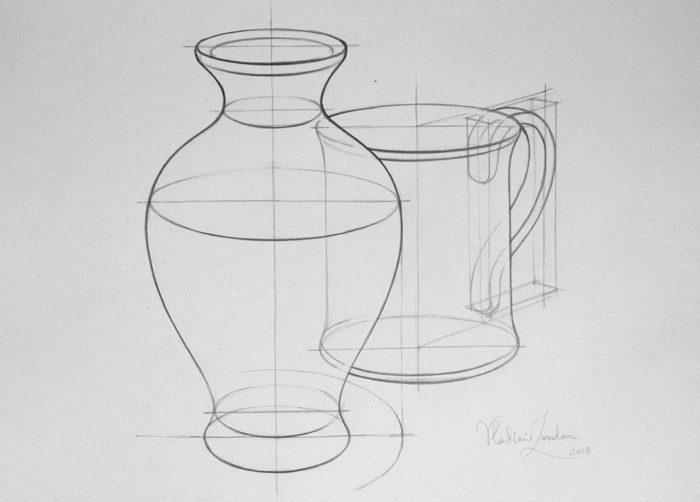
Sketch by Vladimir London
2. Drawing axes of symmetry
The majority of man-made objects and many natural ones have axes of symmetry. For example, a vase has at least three axes: the vertical axis and two axes of the top and bottom circular planes that are seen in perspective as ovals. You need to mark all those axes in drawing and make sure that the object is symmetrical along those axes.
The same with a human face – it has a vertical axis of symmetry.

Portrait sketch by Vladimir London
3. Using principles of linear perspective
Perspective is the way of depicting three-dimensional objects on a flat surface while minimizing distortions. You will find more information on this topic here:
//drawingacademy.com/drawing-in-perspective
4. Drawing planes of objects
Understanding planes and seeing their spatial arrangements is crucial when you draw three-dimensional objects. No matter how complex an object is, it can be simplified using flat planes that describe the shape.
For example, a human head can be stylized with planes that help to “build constructively” a portrait:
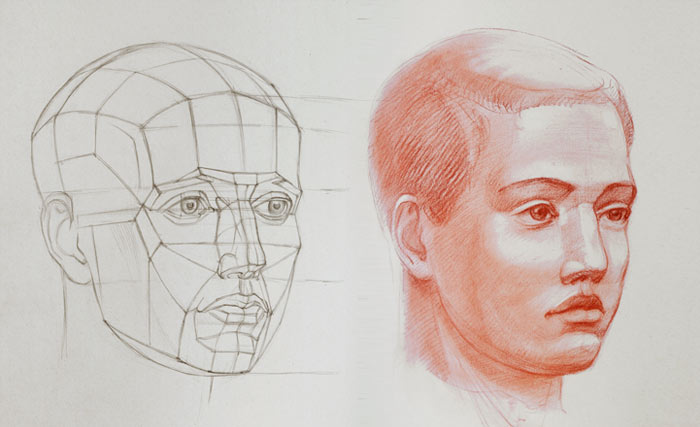
Portrait drawing by Vladimir London

Portrait drawing by Vladimir London
5. Measuring and using proportions
Every object has proportions. You can measure from life and apply in drawing such proportions as the width-to-height ratio or proportions of smaller parts of an object. You can also compare relative sizes of different objects to each other. For example, in a still-life, you can check how many times one object is bigger or smaller than another one.
When drawing from life, you can measure proportions and angles with a pencil. Here’s how to do it:
//drawingacademy.com/how-to-measure-with-a-pencil
//drawingacademy.com/how-do-we-measure-with-a-pencil
6.Using virtual lines of alignment
For arranging objects in drawing and making sure their parts are placed accurately, you can use virtual lines that go through any two dots of the same or different objects. You can measure both the angle (tilt) of that virtual line and the distance between two dots. How to choose dots is your free choice. The more dots you check, the more accurate a likeness you will achieve. For example, when drawing a portrait in three-quarter view, you can check how an eyebrow aligns to the top of the ear or how much the upper lip is protruding in front of the lower one. In a still-life, you may want to check the angle of a virtual line that goes from the top of one object to another.

7. Using contours
When drawing three-dimensional objects, it is more important to understand and draw contours than outlines. If you are not sure of the difference between outlines and contours, you may check this video lesson, Chapter 10 – Define the contours of geometric and organic objects.
//drawingacademy.com/help-i-cant-draw
In some cases, you do not draw outlines at all, only contours. For example, a human hand in deep foreshortening is impossible to depict realistically with outlines, so using contours is the only way to describe the depth of the hand in perspective.
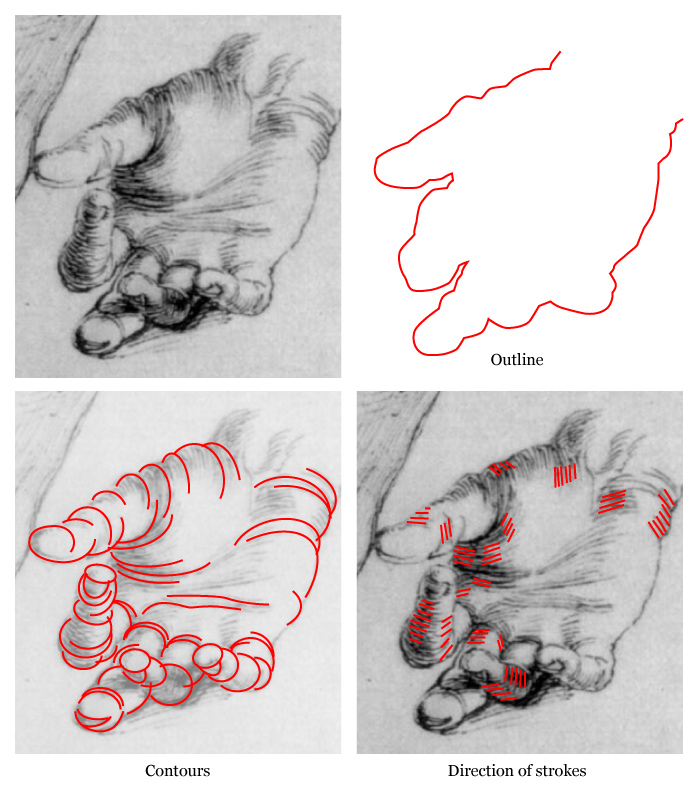
8. Knowing and applying proportions of a human body
There are proportions of a human body that a proficient fine artist must know and apply automatically instead of measuring them on a model. This helps to avoid distortions of measurable photo-perspective when a model is located close to an artist. In all cases, knowing the classical proportions of a human body gives an edge in drawing any model, because an artist is equipped with the necessary knowledge of what ratios to measure, even though they might deviate slightly from classical proportions.
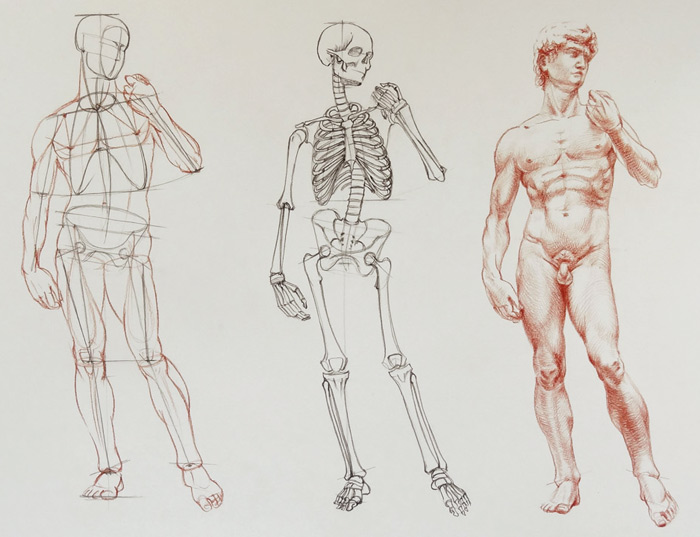
Drawing by Vladimir London
9. Knowing and applying human anatomy in figurative drawing
This principle is especially important for a figurative artist. It helps in drawing figures and portraits from life, memory, and imagination.
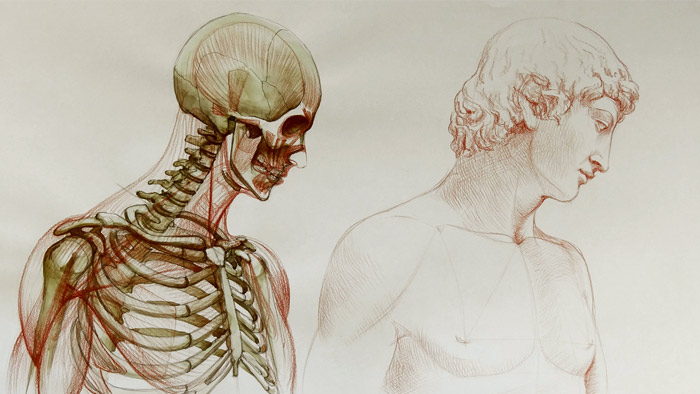
Drawing by Vladimir London
10. Applying strokes of tonal rendering along contours
Shading along contours helps to reveal the depth and form of objects.
11. Knowing and using the sequence of drawing steps
There are certain steps an artist takes when drawing, for example, a portrait. Knowing what to start with and how to go through the whole sequence is very helpful.
Here’s the Step-by-Step Guide on How to Draw a Portrait in the three-quarters view

Portrait drawing by Vladimir London
12. Knowing and using golden proportions
The Golden Ratio is present in nature and is used for man-made objects. It is all around us; it governs the beauty and aesthetics of this world and art in particular. If you want to make beautiful artworks, you have to learn what this ratio is about and how to use it in art.
Here are some examples of golden proportions in my watercolors:
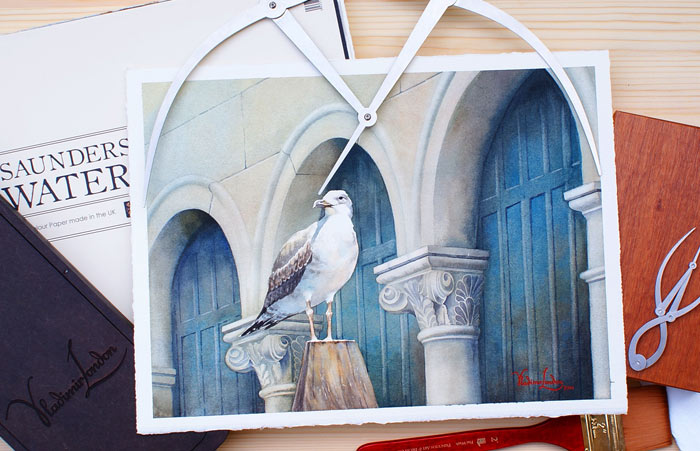
Watercolor by Vladimir London
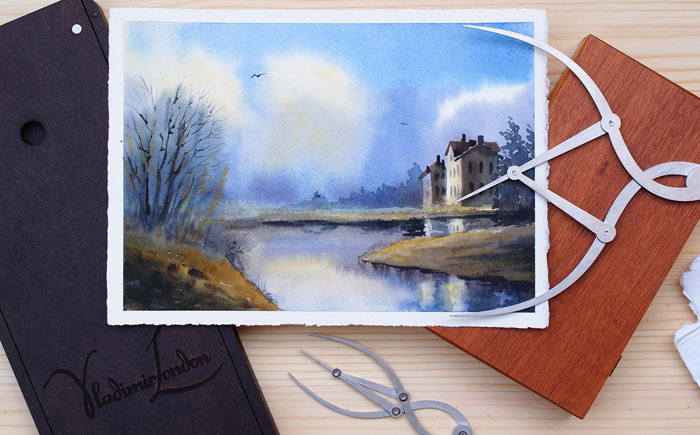
Watercolor by Vladimir London
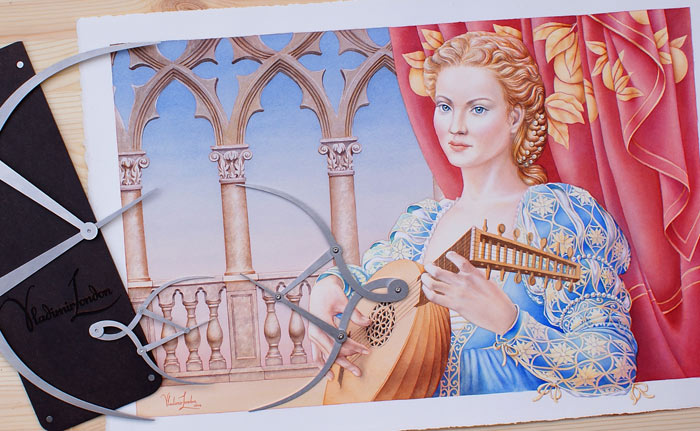
Watercolor by Vladimir London

Watercolor by Vladimir London
The list above is not exhaustive and may sound a bit complicated, but a proficient artist uses these principles almost subconsciously, on autopilot. Of course, to get such mastery, you need to go through every point meaningfully and practice it thoroughly. With time, this will become a natural way to draw for you.
I hope this gives you enough to carry on.
To your creative success,
Vladimir London
Drawing Academy tutor

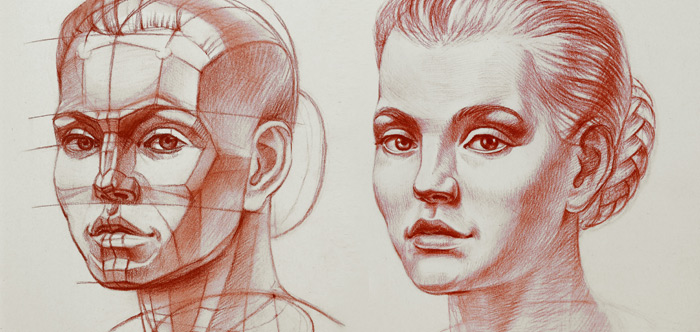




In this article, I have learned more about drawing than during four years in the art college! Thank you so much for sharing such useful information.
I do not understand why in my art college teachers never mentioned about golden proportions or doing direction of pencil strokes along contours.
I have been taught why any random thing can be called art, but not how to draw using constructive drawing principles.
I would like to enroll in the Drawing Academy now and start learning drawing from basics. I wish I would find this website earlier
same here :/ if my art teachers were as half talented or knowledgeable as the author I would now have a great art portfolio and good drawing skills. Rodrigo, let us know how this course works for you after you enter this online academy
I like these beautiful drawings and watercolors!
Do I have to draw planes of objects? I don’t see any planes on human faces and round objects
Hi Stanislav,
Thank you for your question. Using virtual planes is the way to simplify complex objects like a human head, for example. As a proficient artist, you do not have to draw planes; this is what you keep in mind and use subconsciously. However, if you are a beginner, drawing planes will help you to better see geometry and volumes of objects; that is why you may want to practice this constructive drawing principle until you can use the necessary knowledge on “autopilot”.
Of course, there are no perfectly flat planes on real human faces. That is why you need to learn how to draw what you know, not copy what you see.
I hope this helps.
Best regards,
Vladimir
what a good article! i have learned more in 15 minutes here than in my whole previous life about constructive drawing principles … thank you !